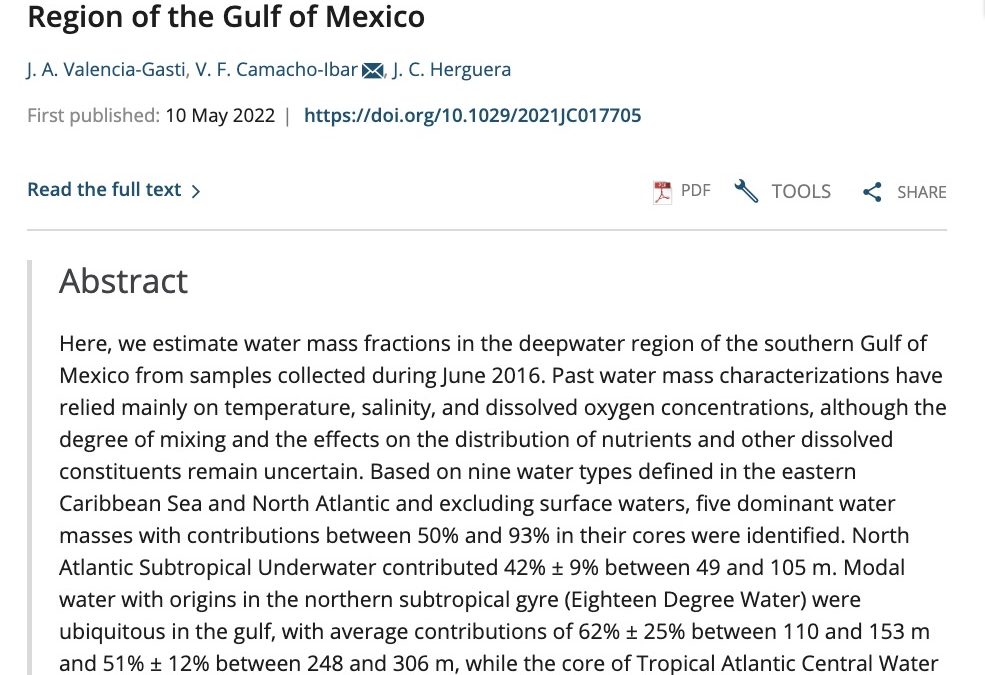Authors: J. A. Valencia-Gasti, V. F. Camacho-Ibar, J. C. Herguera
https://doi.org/10.1029/2021JC017705
Abstract
Here, we estimate water mass fractions in the deepwater region of the southern Gulf of Mexico from samples collected during June 2016. Past water mass characterizations have relied mainly on temperature, salinity, and dissolved oxygen concentrations, although the degree of mixing and the effects on the distribution of nutrients and other dissolved constituents remain uncertain. Based on nine water types defined in the eastern Caribbean Sea and North Atlantic and excluding surface waters, five dominant water masses with contributions between 50% and 93% in their cores were identified. North Atlantic Subtropical Underwater contributed 42% ± 9% between 49 and 105 m. Modal water with origins in the northern subtropical gyre (Eighteen Degree Water) were ubiquitous in the gulf, with average contributions of 62% ± 25% between 110 and 153 m and 51% ± 12% between 248 and 306 m, while the core of Tropical Atlantic Central Water (TACW; 70% ± 5%) dominated between 355 and 510 m. Water at the nitrate maximum consisted of TACW (48% ± 13%) and Antarctic Intermediate Water (AAIW; 32 ± 14%), with the local remineralization of organic matter adding ∼10% to the nitrate pool. Below ∼800 m, water transitioned from AAIW to a domain of two components of Labrador Seawater. Mesoscale eddies controlled the observed depth variability of the water masses from the surface down to ∼1,000 m. This study provides a quantitative approximation to evaluate the addition of nutrients to the different water masses by biogeochemical processes driven by an epipelagic ecosystem generally considered to be oligotrophic.
Keywords: Gulf of Mexico, optimum multiparameter analysis, water mass fraction, water type, nitrate, mesoscale eddies.
El artículo es una contribución del grupo CiNEMa (grupo de investigación de los Ciclos de Nutrientes en Ecosistemas Marinos) del Instituto de Investigaciones Oceanológicas – UABC, en el marco del proyecto del CIGoM en el que el primer autor, el Dr. Augusto Valencia-Gasti realizó un posdoctorado bajo la dirección del Dr. Víctor Camacho. En el artículo se reporta la contribución de las diferentes masas de agua presentes en el Golfo de México a las muestras discretas recolectadas en la campaña XIXIMI-5. Con el cálculo de las fracciones de las masas de agua se puede separar la contribución por mezcla física de la contribución por procesos biogeoquímicos (i.e. la remineralización de la materia orgánica) al contenido de los nutrientes en el golfo.


Recent Comments